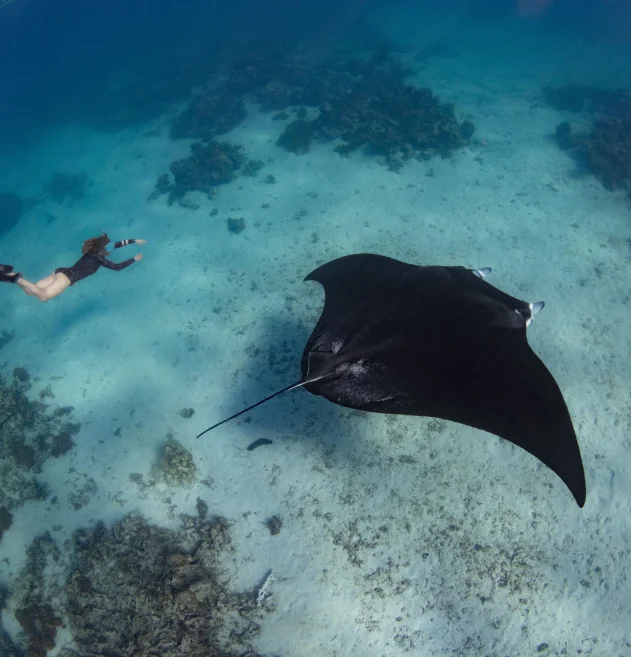
Raja Ampat Diving
Discover the World’s Richest Marine Biodiversity and the Ultimate Diving Experience in Raja Ampat, Indonesia.
Welcome to the enchanting world of Raja Ampat diving, where the vibrant colors of pristine coral reefs meet the mesmerizing beauty of marine life. Embark on an unforgettable adventure through liveaboard diving, immersing yourself in the rich biodiversity and breathtaking underwater landscapes that this tropical paradise has to offer.
Explore hidden coves, swim alongside majestic manta rays, and witness the dance of exotic fish species in their natural habitat. Whether you’re an experienced diver or a passionate beginner, Raja Ampat’s liveaboard diving experiences will leave you in awe of the wonders that lie beneath the surface of the crystal-clear waters.
Located in the heart of Indonesia’s Coral Triangle, Raja Ampat is a diver’s paradise that boasts a remarkable biodiversity, making it one of the most sought-after diving destinations in the world. As you explore the depths of this underwater haven, you’ll be greeted by a mesmerizing display of marine species.
Raja Ampat diving is one of the best destinations for
Indonesia diving
Explore Macro photography opportunities such as pygmy seahorses to wide-angle photography with the majestic Manta Rays.
Immerse yourself in the diverse ecosystem of Raja Ampat as you embark on unforgettable underwater adventures. The region is renowned for its extraordinary aquatic life, with over 1,500 fish species, including grey reef sharks, white tip sharks, and vibrant butterfly fish. Explore the vibrant coral adorned with colourful soft corals and encounter magnificent marine organisms such as giant clams and Napoleon wrasse. From the smallest critters like pygmy seahorses to majestic creatures like manta rays, Raja Ampat offers a mesmerizing array of underwater wonders for divers and underwater photographers alike.
Raja Ampat Dive Odyssey
Whether you’re a beginner or an experienced diver, Raja Ampat caters to all skill levels. Dive operators in the area offer a wide range of services and support for novice and advanced divers. From providing equipment rentals and guided tours to arranging specialized diving trips, they ensure a seamless and enjoyable experience for all. The dive sites in Raja Ampat feature a diverse array of underwater landscapes, including shallow reefs teeming with colorful fish, as well as dramatic drop-offs and submerged pinnacles that will thrill even the most experienced divers.
With the assistance of professional dive operators and their expertise, advanced divers can easily explore these exhilarating sites. Additionally, for those looking to maximize their underwater adventures, speed boats are available for quick and efficient transport to various dive spots, allowing divers to cover more ground and discover even more breathtaking marine wonders in Raja Ampat’s crystal-clear waters. The combination of skilled dive operators, advanced divers, and convenient speed boats ensures that every diving expedition in Raja Ampat is a truly unforgettable experience.
Beyond the extraordinary diving experiences, Raja Ampat offers a unique blend of natural beauty and cultural heritage. Above the water, you’ll find breathtaking landscapes of lush islands, secluded white sandy beaches, and towering limestone cliffs. The local communities, known for their warm hospitality, provide a glimpse into the rich traditions and way of life in this remote part of Indonesia.
For diving enthusiasts, the southwest side of Gam Island is a must-visit, boasting a renowned manta ray cleaning station where you can witness these graceful creatures being groomed by smaller fish in a mesmerizing underwater spectacle.
Whether you’re a passionate diver or a nature enthusiast seeking an awe-inspiring adventure, Raja Ampat is an oasis of wonder that promises an unforgettable experience. Explore the vibrant coral reefs during day dives or embark on exciting night dives to witness the mesmerizing nocturnal aquatic life. Dive into the world’s most affluent aquatic life, and let the magic of Raja Ampat captivate your senses.
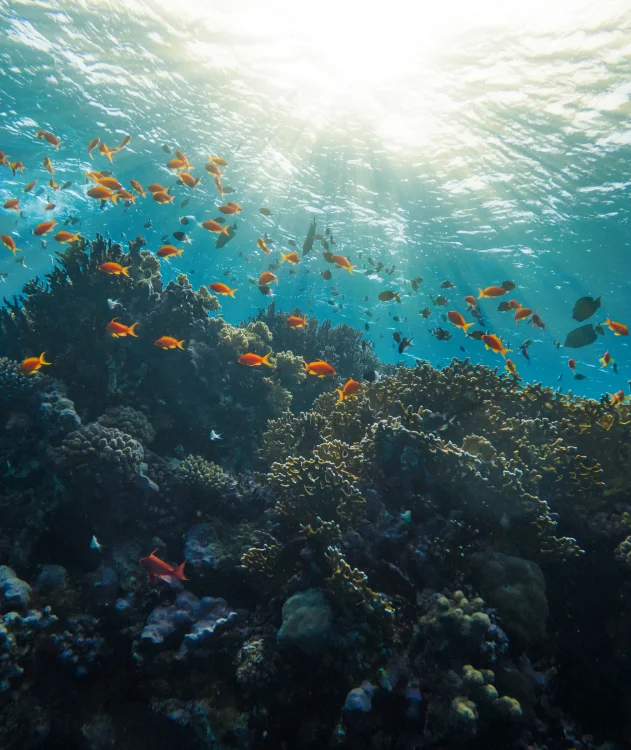
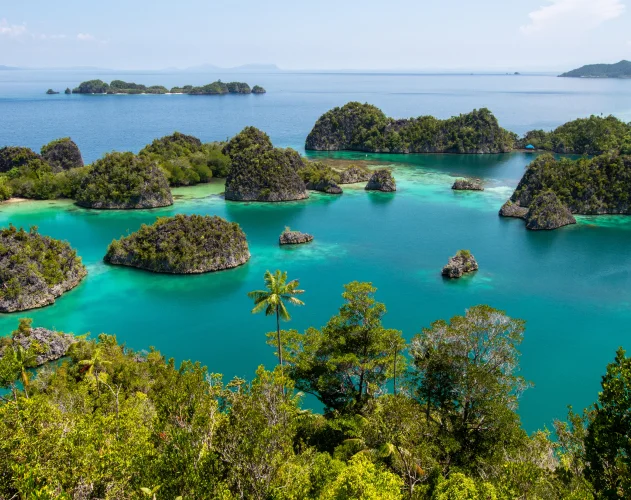
Raja Ampat Diving Areas
Raja Ampat comprises three key areas: North, Central, and South. Each area boasts unique features, specialties, and diving conditions. Some divers return multiple times to immerse themselves in Raja Ampat’s beauty fully.
The North area, particularly Raja Ampat, is renowned for its vibrant marine life and scuba diving opportunities. Explorers can witness stunning coral reefs teeming with colorful fish and encounter more giant marine creatures like walking shark, gray reef sharks, manta rays, and turtles during their Raja Ampat scuba diving adventures. Nutrient-rich waters attract diverse species, including schooling fish, making it a paradise for underwater photography. Iconic dive sites like Cape Kri and Blue Magic in Raja Ampat offer unique fish populations and breathtaking underwater landscapes for scuba divers to explore.
In the Central area, divers can expect varied underwater scenery—steep walls, pinnacles, and caves. This region provides an exceptional diving experience with intricate coral formations and channels. Navigating through narrow passages adorned with colourful soft corals, divers will encounter glamorous aquatic life.
The Central area is also renowned for its diverse macro and vibrant fish life, making it a haven for critter enthusiasts. Spotting seahorses, nudibranchs, other fascinating small creatures, and a colorful array of fish is an everyday delight. With its rich biodiversity and captivating underwater landscapes, the Central area of Raja Ampat always impresses divers of all levels.
Central
Diving in Raja Ampat’s Central Area offers diverse underwater landscapes and aquatic life. Blue Magic has strong currents, vibrant coral gardens, and thrilling encounters with barracudas, trevallies, and reef shark. Mesmerizing soft coral formations and abundant aquatic life create an awe-inspiring experience.
Sardine Reef is named after massive schools of shimmering silverfish. Colorful corals, anemones, and countless reef fish adorn the reef. Nooks reveal hidden macro critters, delighting underwater photographers.
Cape Kri near Mansuar Island holds the world record for fish diversity, with 374 species documented. Expect encounters with surgeonfish, fusiliers, and jacks. The reef’s impressive depth offers thrilling wall diving with chances to spot reef sharks, rays, and the occasional dugong.
The Central Area of Raja Ampat boasts dive resorts catering to all levels. These provide comfortable accommodations, delicious cuisine, and well-equipped dive centers. Easy access to nearby sites maximizes exploration time. Whether a beginner or experienced diver, the Central Area offers a convenient and exciting base for Raja Ampat adventures.
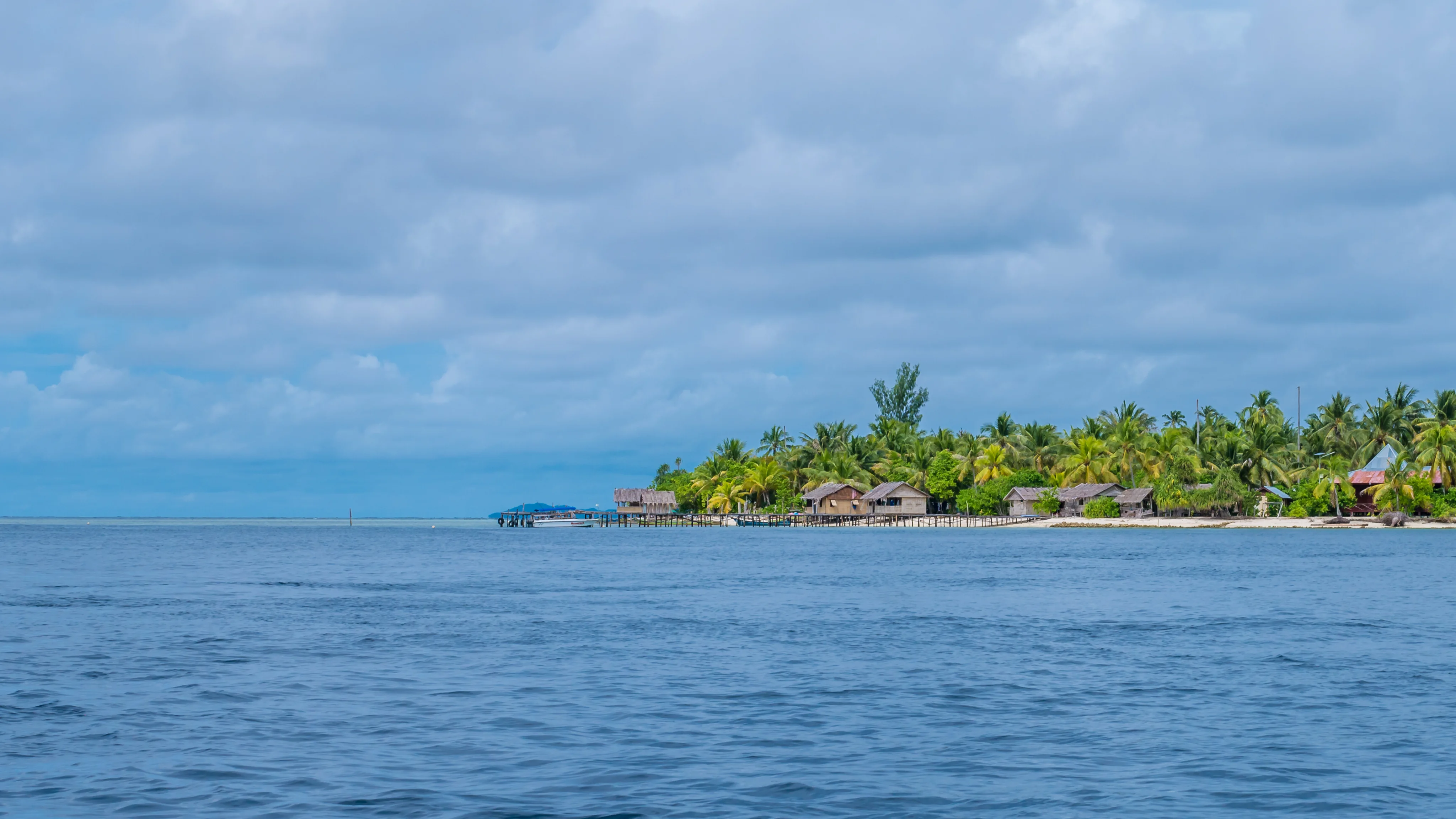
North
The North region of Raja Ampat, Indonesia holds a special allure for divers who crave unspoiled underwater landscapes and thriving marine ecosystems, including the exhilarating experience of Raja Ampat scuba diving. Unlike the easily accessible central area, the North is more remote and not readily reached by divers staying in dive resorts. However, adventure seekers need not be discouraged, as there is a perfect solution. The ideal way to immerse oneself in the wonders of the North, including the captivating Raja Ampat scuba diving, is by embarking on a liveaboard adventure.
This floating hotel enables divers to explore multiple dive spots across various locations, such as Raja Ampat, Indonesia. With a knowledgeable dive guide on board, divers can discover the hidden treasures of the North region and visit exceptional dive sites off the beaten path. By opting for a liveaboard experience, divers gain access to some of the most breathtaking dive sites in the North of Raja Ampat, where fish life thrives. One such gem is My Reef, renowned for its vibrant coral gardens and many fish species. Exploring this underwater paradise reveals an enchanting world teeming with colorful corals, reef sharks, turtles, and abundant tropical fish, making it a favorite among most liveaboards. Another must-visit site is Melissa’s Garden, where an awe-inspiring coral formation resembles a magnificent garden. Divers can swim alongside schools of fish and encounter majestic marine creatures like manta rays and whale sharks, adding to the allure of this location.
Dayang, nestled in the North of Raja Ampat, stands as one of the most incredible dive sites in the region. This exceptional site offers a unique experience, inviting divers to explore the labyrinthine underwater caves and tunnels beneath the surface. The intricate network of caverns provides a thrilling adventure for experienced divers, and the awe-inspiring beauty of the stalactites and stalagmites is mesmerizing. Dayang’s diverse aquatic life includes nudibranchs, pygmy seahorses, and even the elusive wobbegong shark.
To maximize the diving expedition, many liveaboard operators combine Raja Ampat’s central and northern areas in their itineraries. This allows divers to explore a broader range of dive sites, including those in the central region, renowned for its stunning coral reefs and abundant biodiversity. The ten-hour sail from the central area to the North not only adds to the adventure but also provides an opportunity to soak in the breathtaking views of the surrounding islands and revel in the tranquility of the open sea.
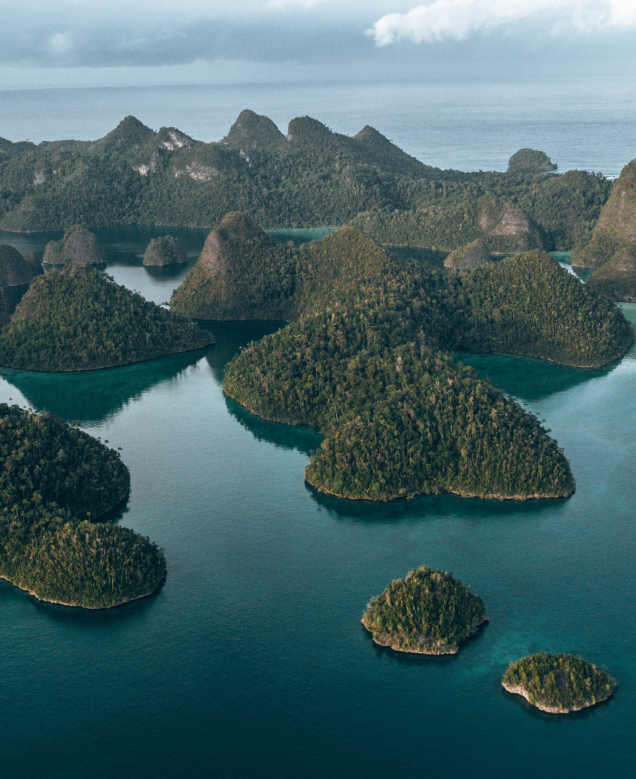
South Misool
The region known as South Raja Ampat, or Misool, in Indonesia, is renowned for its remote and exclusive diving opportunities. Accessible solely by Liveaboards or through a stay at the world-famous Misool Eco Resort, this area is the ultimate destination for diving enthusiasts. Offering unparalleled seclusion,
Misool Eco Resort in Raja Ampat, Indonesia, is widely regarded as the most isolated diving location within Raja Ampat. This seclusion contributes to the unspoiled allure and pristine nature of the underwater realm in Raja Ampat, Indonesia, eagerly awaiting exploration.
Misool boasts many renowned dive sites that captivate divers from around the globe. Among these is the esteemed Magic Mountain, which enthralls with its vibrant coral reefs and abundant aquatic life, including soft coral. Barracuda Rock, another favored spot, allows for encounters with immense schools of barracuda and various other aquatic species.
Traveling to Misool from the central area, specifically South Raja Ampat, typically involves embarking on a Liveaboard journey lasting approximately 16 hours. However, this voyage holds the promise of adventure and builds anticipation as you navigate crystal-clear waters amidst breathtaking landscapes, where juvenile fish thrive in their natural habitats. Immerse yourself fully in the beauty and tranquility of the region, and you will find the destination even more rewarding.
When planning a diving expedition to Misool, most Liveaboard operators offer a standard itinerary spanning 8 days and 7 nights. This duration allows divers to thoroughly explore the beautiful South Misool area, uncover its hidden treasures, and witness the remarkable biodiversity thriving in these waters.
For those with more time and an eagerness to explore the entirety of Raja Ampat, Liveaboards also provide extended trips of up to 11 days, encompassing not only Misool but also the Central and North regions.
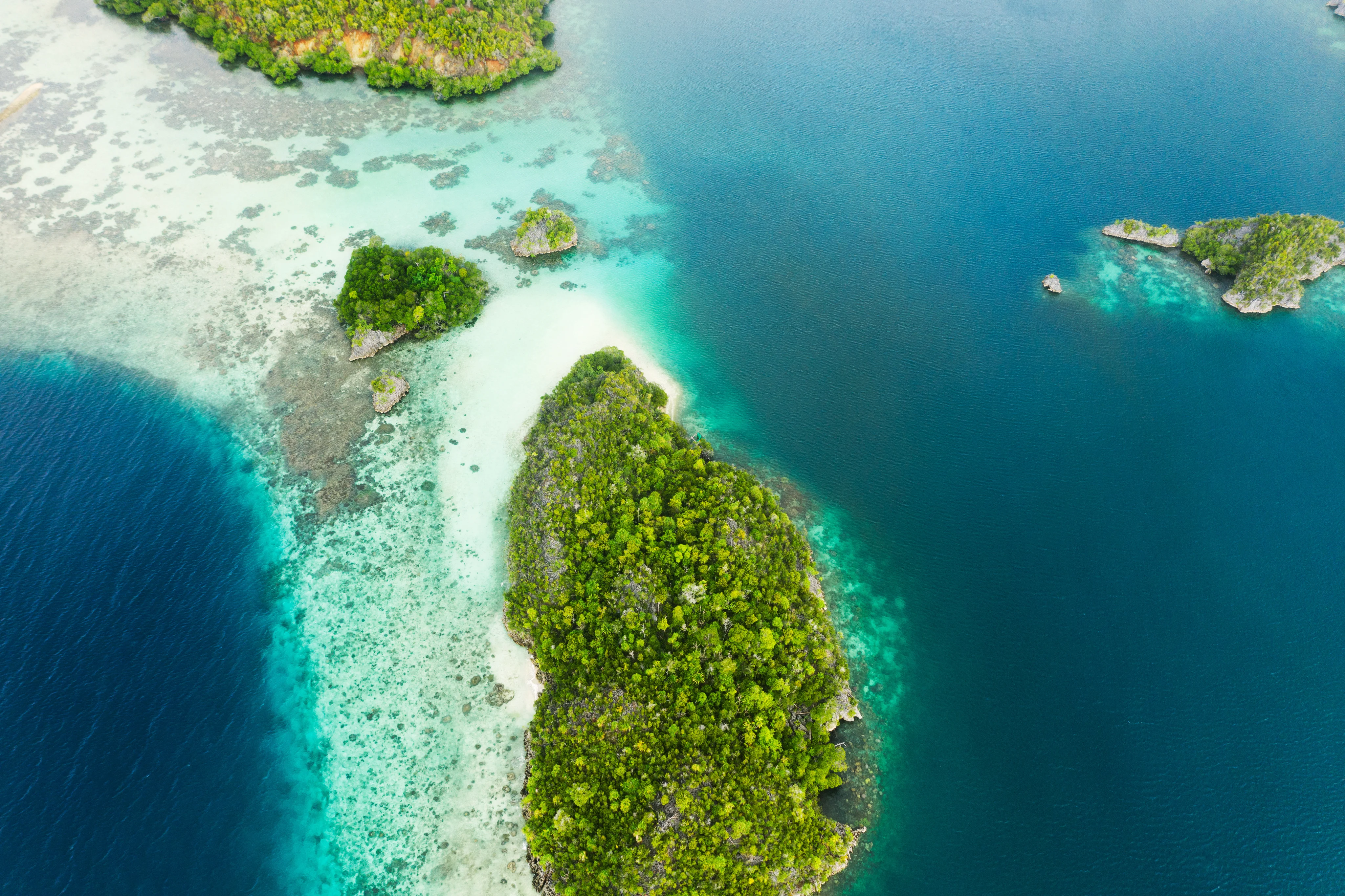
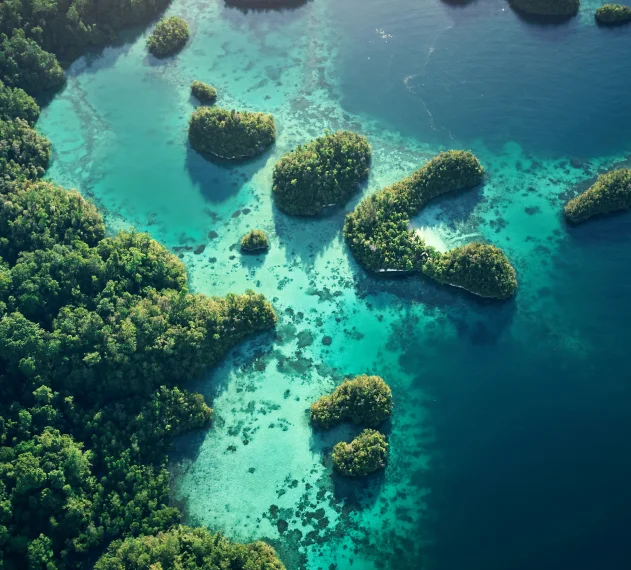
7 Best Dive Sites in Raja Ampat
Raja Ampat scuba diving provides a wide variety of dive sites, perhaps up to 100 dive sites, including the breathtaking experience of diving in Raja Ampat. With its stunning underwater landscapes and rich marine biodiversity, diving in Raja Ampat is truly a must-do! There are still many more dive sites in this region waiting to be explored and discovered. One of the most popular dive sites in Raja Ampat is Misool Island. Located in the southern part of the archipelago, Misool offers a stunning underwater landscape that will leave divers in awe. The island is surrounded by a vast coral reef system with vibrant coral gardens and a plethora of aquatic life, making it one of the top choices for divers in the area.
Diving in Misool allows you to explore colorful coral walls, swim through intricate cave systems, and encounter abundant marine species, including manta rays, and sharks. The visibility in this area is usually excellent, providing divers with crystal-clear waters and breathtaking views. Another remarkable dive site in Raja Ampat is Wayag Island. Known for its iconic karst limestone formations rising dramatically from the turquoise waters, Wayag offers a unique diving experience. Beneath the surface, divers can explore an underwater paradise filled with vibrant coral reefs, steep walls, and an incredible variety of marine life.
Wayag is home to a variety of aquatic species, including schools of barracudas, jacks, and colorful reef fish. Divers can also spot turtles and octopuses and even encounter the elusive wobbegong shark. The stunning topography and diverse marine ecosystem combination make Wayag Island a gem for diving enthusiasts seeking unforgettable underwater adventures in Raja Ampat.
The Passage
The Passage is a renowned dive spot, known for being a manta cleaning station, located between the islands of Gam and Waigeo in Raja Ampat, Indonesia. This drift dive adventure is considered one of the most thrilling experiences for divers, especially during their last dive in the area. As you traverse through the narrow channel, you will be surrounded by a breathtaking underwater landscape adorned with colorful soft corals, elegant gorgonian sea fans, and impressive overhangs. Here, you can witness the mesmerizing sight of majestic manta rays gracefully gliding in to be cleaned by smaller fish. While exploring this vibrant ecosystem, keep your eyes peeled for the vibrant hues of nudibranchs, the slender beauty of pipefish, and if you’re lucky, you might even spot the elusive walking shark.
As you navigate through The Passage, you’ll experience the thrill of drifting with the current, which adds an element of excitement to your dive. The solid current sweeps you along the channel, allowing you to effortlessly glide past vibrant coral formations and observe the fascinating marine life that calls this area home. The Passage also offers a unique opportunity to witness the mesmerizing interaction between the ocean’s currents and the marine ecosystem. The swift current carries abundant nutrients, attracting an array of marine life congregating in this narrow channel. As you dive deeper into The Passage, you’ll notice the current changing direction, causing a surge of energy and creating a dynamic underwater environment.
Exploring The Passage is an adventure for experienced divers and a paradise for underwater photographers and nature enthusiasts. The awe-inspiring beauty of the underwater world, coupled with the thrill of drifting through the channel, makes this dive site an unforgettable experience. Whether captivated by the corals’ vibrant colors, the nudibranchs’ intricate patterns, or the elusive walking shark, The Passage offers a magical journey into the ocean’s wonders, leaving you with memories to cherish forever.
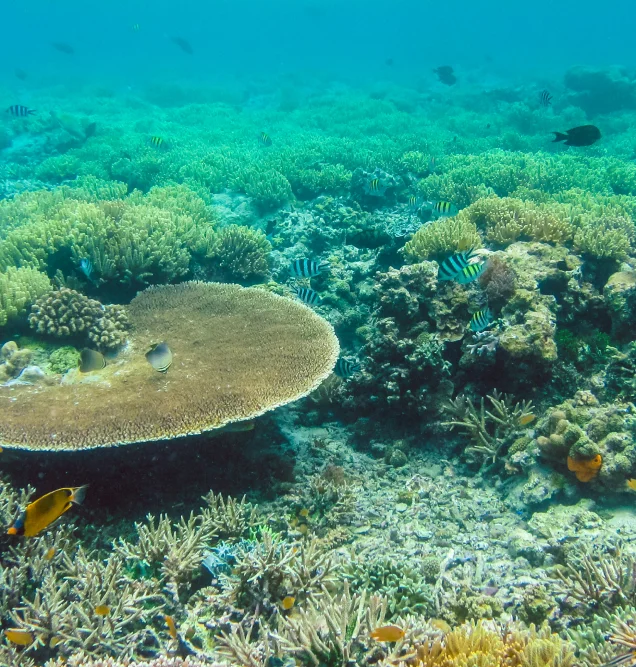
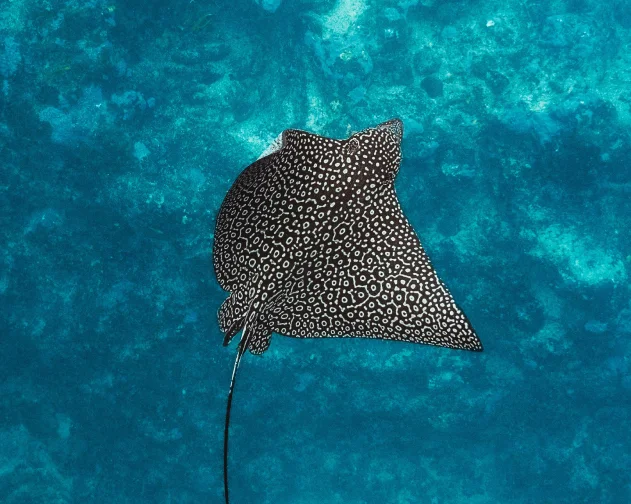
Manta Sandy
Manta Sandy, located in Raja Ampat, Indonesia, is a cleaning station for manta rays, making it one of the best places in Raja Ampat to witness these gentle giants up close. Watch as the rays glide gracefully above you, their wingspans reaching up to 20 feet across.
Although a popular dive site for the Manta Rays, Manta Sandy is not the only dive site to see the Mantas. Other dive sites offer the same or even better opportunities, for example Dayang.
Dayang is another excellent dive site in Raja Ampat, Indonesia, that offers incredible opportunities to observe manta rays. With its crystal-clear waters and diverse marine life, Dayang in Raja Ampat, Indonesia, provides a unique and unforgettable experience for divers and snorkelers. The site is known for its healthy coral reefs and strong currents, attracting a large number of manta rays that come to feed on the abundant plankton.
What sets Dayang apart is its less crowded and more serene atmosphere. Dayang offers a quieter and more intimate encounter with these magnificent creatures. Divers can witness the manta rays gliding gracefully through the water, showcasing their impressive aerial maneuvers and allowing for a closer interaction without the distractions of larger crowds.
Melissa’s Garden
Another must-visit dive site in Raja Ampat, Indonesia, Melissa’s Garden is famous for its vibrant hard coral formations that create a stunning underwater garden. This site is teeming with marine life, including sweetlips, fusiliers, and countless colorful reef fish. Melissa’s Garden is typically visited by all Liveaboards on all the itineraries as it’s located in the Central part of Raja Ampat.
Diving at Melissa’s Garden offers a truly immersive experience as a kaleidoscope of colors and textures surrounds divers. The complex coral formations at this site are exceptionally diverse, ranging from massive table corals to delicate branching corals, creating a visually captivating scene. The vibrant hues of red, orange, and purple provide a breathtaking backdrop against the crystal-clear waters, making it a paradise for underwater photography enthusiasts.
Beyond the mesmerizing coral garden, Melissa’s Garden is also known for its impressive biodiversity. As divers explore the site, they may encounter larger marine species, such as reef sharks and sea turtles gracefully gliding through the water. The schools of sweetlips and fusiliers add a dynamic element to the underwater landscape, while smaller creatures like colorful nudibranchs and shrimp hide amongst the coral crevices.
With such a wide variety of aquatic life, every dive at Melissa’s Garden promises to be a unique and memorable experience, offering a glimpse into the vibrant ecosystem of Raja Ampat’s underwater world.
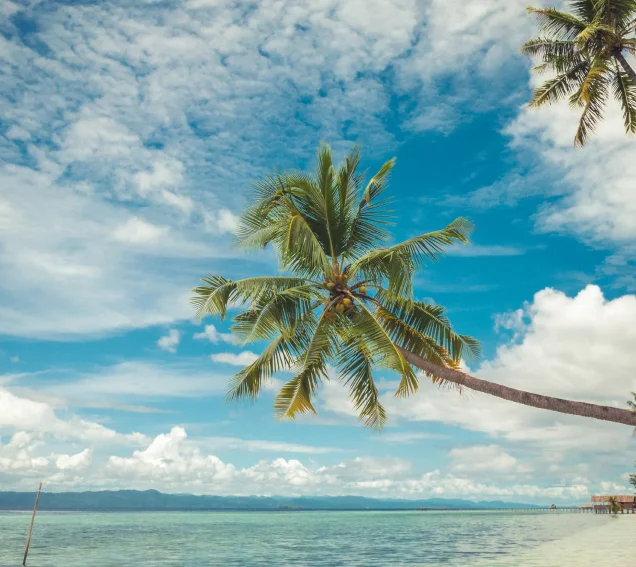
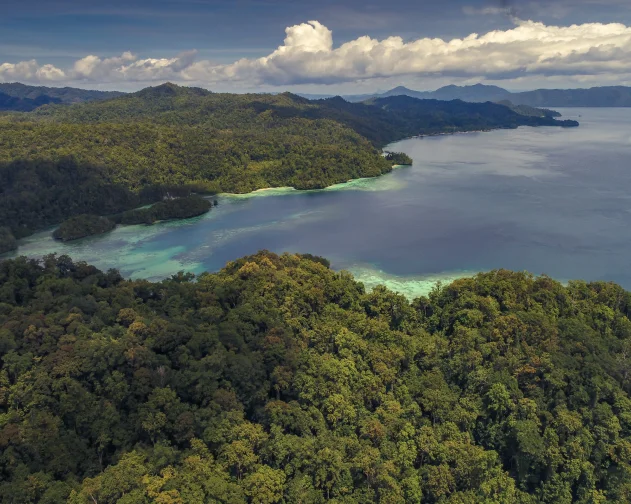
Dampier Strait
Dampier Strait, located in the Raja Ampat archipelago of Indonesia, is a breathtaking waterway that captivates the hearts of divers and nature enthusiasts worldwide. The strait is renowned for its unparalleled richness of aquatic life and stunning underwater landscapes.
Above the water’s surface, Dampier Strait also offers a scenic setting, including the breathtaking beauty of Raja Ampat, Indonesia. Lush green islands, including Raja Ampat’s magnificent archipelago, dot the horizon, their rugged cliffs and dense vegetation creating a dramatic backdrop against the sparkling blue waters.
The strait is also home to numerous local villages, where visitors can experience the Papuan people’s rich culture and warm hospitality, further enhanced by the enchanting presence of Raja Ampat, Indonesia.
Travelers can engage in cultural exchanges, witness traditional ceremonies, and indulge in local cuisine, immersing themselves in the vibrant tapestry of Indonesian island life.
The allure of Indonesia extends far beyond the mesmerizing waters of the Dampier Strait. This diverse archipelago nation beckons adventurers to explore its vast and varied landscapes.
Limestone Islands
With their stunning natural beauty and unique geological formations, Raja Ampat, Indonesia, continues to captivate travelers from around the world. These islands are characterized by their towering limestone cliffs, jagged karst landscapes, and crystal-clear turquoise waters. The sheer majesty of Raja Ampat is enhanced by the presence of lush green vegetation and vibrant aquatic life that thrives in the surrounding waters.
One of the most remarkable features of these islands is the presence of hidden caves and caverns within the cliffs. These mystical underground chambers offer intrepid travelers a sense of adventure and exploration.
The caves are often adorned with magnificent stalactites and stalagmites, creating a surreal atmosphere that feels like stepping into another world. Exploring these caves, guided by experienced local guides, allows visitors to witness the awe-inspiring beauty and natural wonders that have been sculpted over thousands of years.
The islands are a treat for the eyes and offer a range of exciting activities for visitors to enjoy. Snorkeling and diving enthusiasts can immerse themselves in the vibrant underwater ecosystems, witnessing the kaleidoscope of colorful coral reefs and exotic marine species that call these waters home. For those seeking a more relaxed experience, the pristine beaches of these islands provide a tranquil setting to soak up the sun, take leisurely walks along the shore, or unwind amidst the serenity of nature.
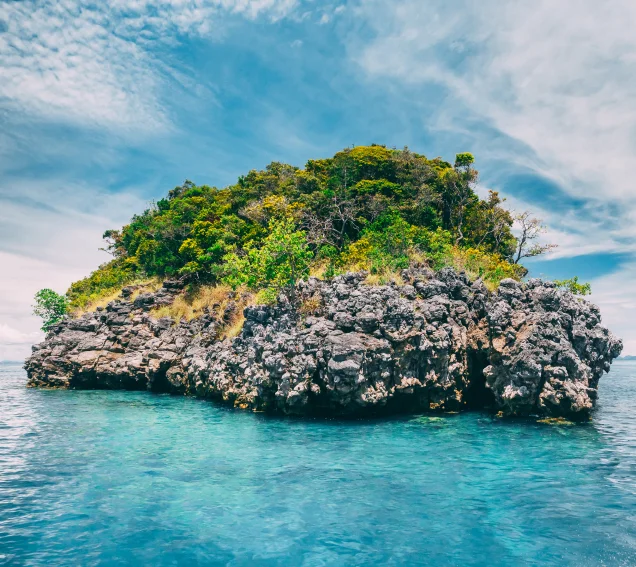

Diving Conditions in Raja Ampat
When visiting Raja Ampat scuba diving in the right season, you will discover stunning underwater conditions: great visibility, warm water temperatures. Depending on the dive site, the visibility in Raja Ampat can go as far as you can see, 30 meters and more (100 feet). Water temperatures vary as well depending on the dive site but typically anywhere between 26C to 28C (78F-82F).
One thing divers must pay attention to are the currents. Sometimes they are unpredictable and sometimes very well known because of the dive site. Diving with reef hooks is recommended but don’t be intimidated because not all dive sites have strong currents.
Overall, it is recommended for divers to have at least an Advanced Diver certification with at least 40-50 logged dives to properly enjoy scuba diving in Raja Ampat.
For the best Raja Ampat Acuba Diving, book your liveaboard trip with confidence on PADI Travel or Liveaboards.com
Travel Times and Best Time to Visit
Raja Ampat is a year-round diving destination, but the best time to visit is from October to April. The Liveaboards in Indonesia are always there starting September – October but make sure to book in advance as Raja Ampat scuba diving spots sell out quite quickly.
During this period, the seas are calm and the visibility is optimal, allowing divers to fully appreciate the underwater beauty of the region. In off-season the Liveaboards move to Komodo but some dive resorts are still open.
To reach the incredible scuba diving destination of Raja Ampat, divers must fly into Sorong’s Domine Eduard Osok Airport, which connects to major Indonesian cities like Jakarta, Bali, and Makassar. If not booking your scuba diving adventure in Raja Ampat with a liveaboard, you need to take a speedboat or ferry to the main islands of Waisai or Misool.
There are high end dive resorts as well as simple accommodation that you can book. Some may provide sea transportation while others will require you to travel to them.
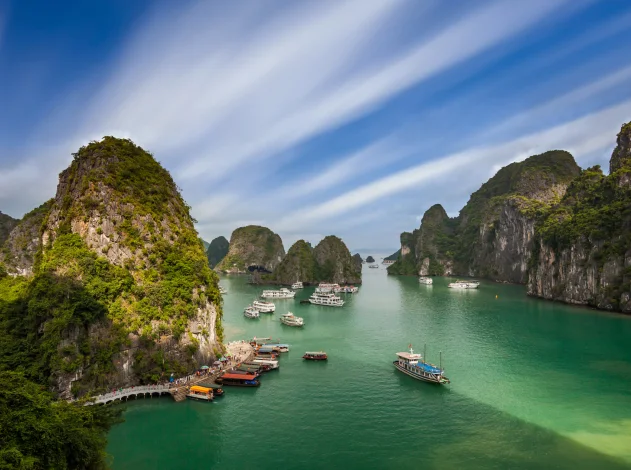
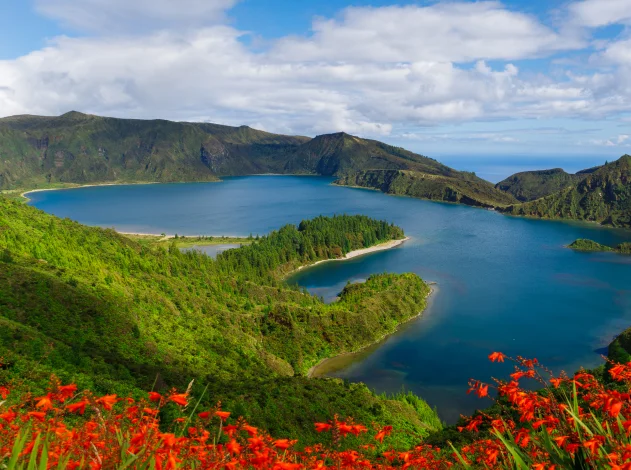
Other Activities To Do In Raja Ampat
Raja Ampat scuba diving is the highlight of things to do but not the only. There are amazing trekking opportunities at Piaynemo as well as in Misool at the famous Love Lake.
Visiting Shark Beach is also a unique experience. Imagine being on a beautiful gold sand beach, with water up to your knees and tens of baby reef sharks swimming around. This is an activity typically done on the North itinerary.
But perhaps one of the most interesting things to do is to snorkel at one of the Jelly Fish lakes of Raja Ampat. And no worries, these Jelly Fish are stingless … and they feel funny while you are gently swimming around. There are so many Jelly Fish, you feel you are swimming in a jelly.
Frequently Ask Question
Everything you need to know about the product and billing. Can’t find the answer you’re looking for? Please chat to our friendly team.
See More FAQs